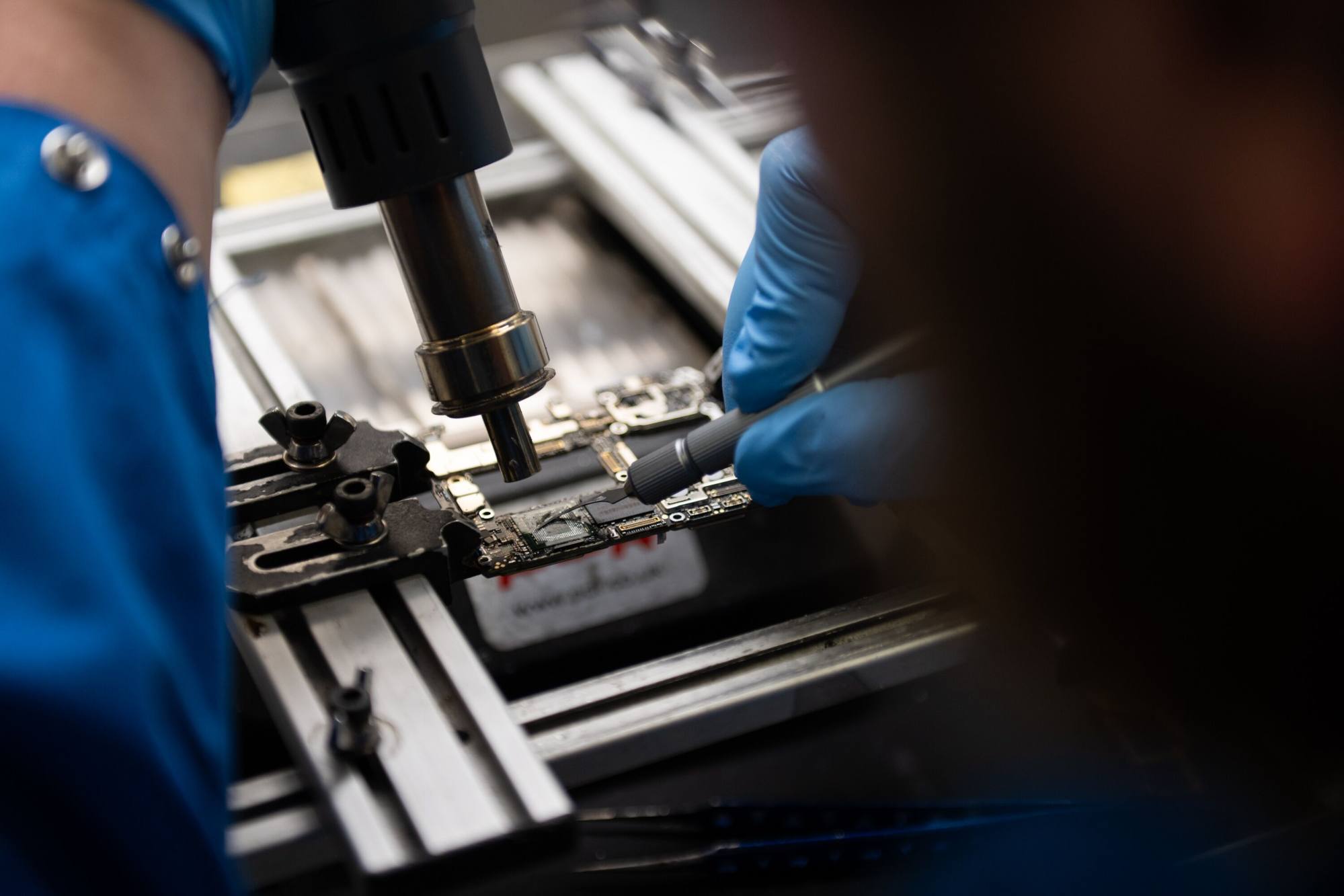
Huawei Technologies’ latest 5G smartphone has thrown an intense spotlight on Semiconductor Manufacturing International Corp (SMIC) after a third-party teardown of the handset indicated that mainland China’s top contract chip maker was behind its advanced processor, which could prompt US government action for violating existing trade sanctions.
SMIC’s share price has gained nearly 20 per cent in Hong Kong and 15 per cent in Shanghai since Huawei launched presales of its new Mate 60 Pro last week, as investors bet that the country’s largest semiconductor foundry produced the Kirin 9000s chipset that powers the smartphone.
US semiconductor research firm TechInsights said in a report that SMIC made the Kirin 9000s via its 7-nanometer process, known as the N+2 node, fuelling speculation that the chip maker was helping Huawei clandestinely overcome stifling US tech sanctions.
Do you have questions about the biggest topics and trends from around the world? Get the answers with SCMP Knowledge, our new platform of curated content with explainers, FAQs, analyses and infographics brought to you by our award-winning team.
SMIC, which was added to the US Entity List in December 2020, did not immediately respond to a request for comment on Tuesday. Huawei, which was put on that trade blacklist in May 2019, declined to comment.

That breakthrough in developing a new 5G processor in mainland China is expected to not only prompt another round of investigation by Washington, but also intensify the US-China tech war.
It could also spark more debate in the US about the effectiveness of sanctions, Jefferies equity analyst Edison Lee said in an interview on Tuesday.
US semiconductor firms like Qualcomm and Nvidia may argue for fewer sanctions because Washington’s trade restrictions have only strengthened China’s motivation for tech self-sufficiency and damaged the commercial interests of US companies, according to Lee.
Since 2019, Washington has restricted Shanghai-based SMIC’s access to extreme ultraviolet lithography systems, the world’s most advanced chip-making equipment that are solely produced by Dutch company ASML Holding.
Where did Huawei get the advanced chips for its latest Mate 60 Pro smartphone?
“The most likely explanation” for the new Kirin 9000s processor used on Huawei’s Mate 60 Pro handset was that SMIC used existing deep-ultraviolet (DUV) lithography equipment to make the chip, according to Tilly Zhang, an analyst at research firm Gavekal Dragonomics.
“DUV lithography can also be used to make chips at smaller process nodes,” Zhang said. “It is not usually considered commercially sensible, but it is not technically impossible.”
SMIC currently ranks as the world’s fifth-largest wafer foundry, behind industry leader Taiwan Semiconductor Manufacturing Co (TSMC), South Korea’s Samsung Electronics, Taiwanese firm United Microelectronics Corp and US chip maker GlobalFoundries, according to research firm TrendForce.
While Beijing considers SMIC as a major player in the country’s semiconductor self-sufficiency efforts, the US-blacklisted company has been mainly engaged in making so-called legacy chips via mature 28-nm grade and above processes for the country’s automotive industry.
China’s top chip foundry SMIC reports lower revenue and profit
Gavekal’s Zhang also suggested the possibility that the Kirin 9000s could have come from a secret stash of advanced chips, developed by Huawei’s chip design arm HiSilicon, that the Shenzhen-based firm stockpiled before the US sanctions took effect.
Another bold suggestion was offered by Jefferies’ Lee, who indicated that SMIC had no direct part in producing the HiSilicon-designed Kirin 9000s.
“While the Kirin 9000s may have a similar build structure as other chips made by SMIC, it could have actually been built by Huawei,” Lee told the Post, reiterating his views in a research note published on Tuesday.
“We believe it is highly likely that Huawei bought SMIC technology and equipment to develop the Kirin 9000s,” he said. “That was after the Chinese chip maker said it had stopped its n+1 and n+2 research and development programmes, which are equivalent to 10-nanometre and 7-nm [chip manufacturing] processes based on our understanding.”
Speculation swirls around Huawei’s advanced chip for its latest smartphone
There are no public reports or evidence about Huawei buying advanced chip-making technology and equipment from SMIC. Still, SMIC quietly took down information about its 14-nm production from its website in May, which fanned speculation that the firm was focusing on mature node production.
“We believe TechInsight’s conclusion is likely based on their comparison of the build structure of Kirin 9000s with that of other SMIC-built chips that it has analysed before,” Lee said in the Jefferies research note. “While that is technically sound, we believe legally it does not mean the chip was necessarily made by SMIC.”
Lee indicated that SMIC is well aware of the US export regulations and the sanctions against Huawei. “SMIC has been compliant with all rules and regulations so far since it was added to the US Entity List in December 2020,” he said, adding that the chip maker would not risk further sanctions on its vast business.
More from South China Morning Post:
- Chinese chip makers can import critical ASML tools until 2024, as new Netherlands rules restrict access to DUV systems
- Tech war: China exploring ways to make its own AI memory chips despite US sanctions, sources say
- China’s top chip designers form RISC-V patent alliance to promote semiconductor self-sufficiency
- Nvidia sees ‘permanent loss’ of business opportunity if US tightens chip export controls on China
- US wants China’s chip industry 5 generations behind cutting edge, head of equipment maker AMEC says at Wuxi conference
For the latest news from the South China Morning Post download our mobile app. Copyright 2023.









































